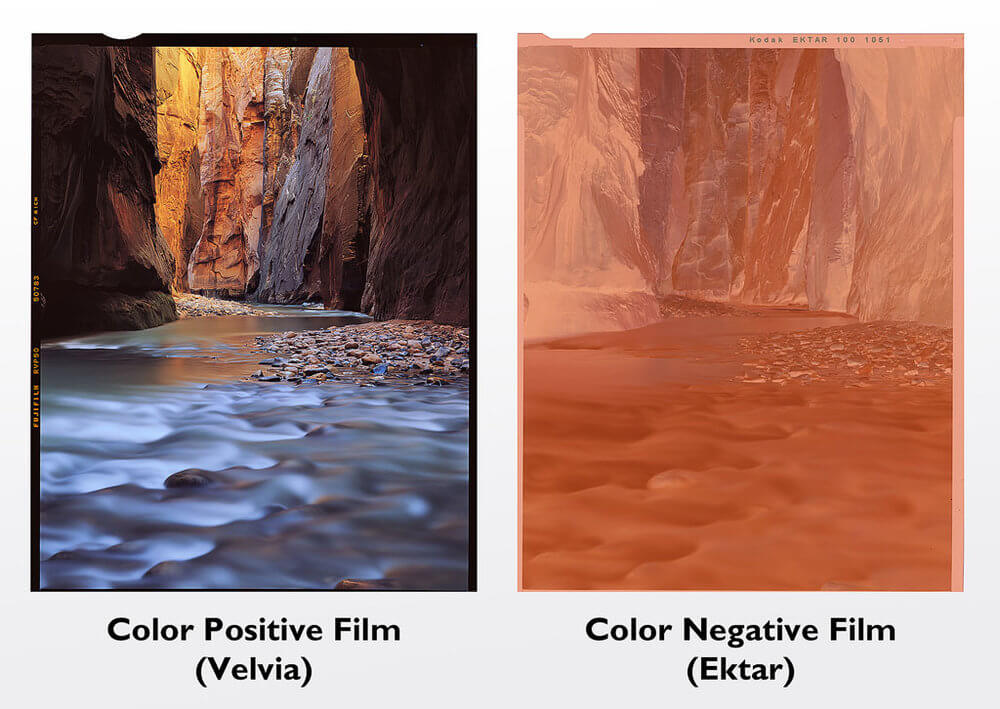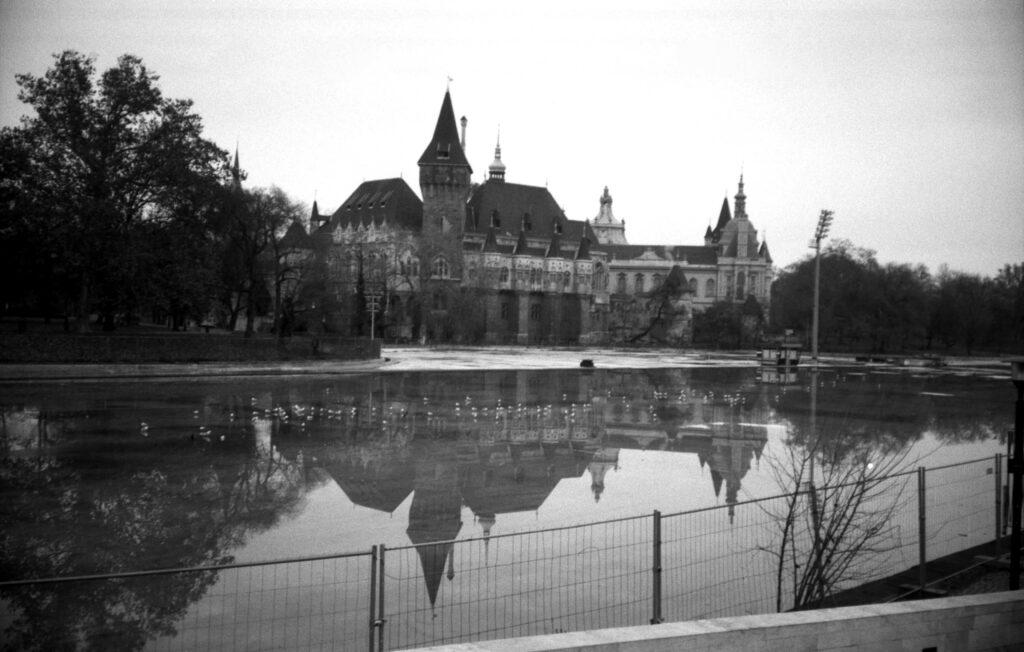Let’s talk about photography as a whole first. Capturing images is a tale as old as time. Or almost. Around 350 BC people started experimenting with camera obscura. The idea is that there is a dark room with only a tiny whole letting in light. The light travels through this pinhole in straight lines and creates an upside-down image of the outside world on the opposite wall. Cameras of all kinds work on the same principle. Modern cameras use a lens to collect light and they record the image on a flat surface. In digital cameras, that is a light detector that captures the image in the form of zeros and ones, which we get back in the form of pixels on a screen.
Analogue photography requires a bit more hands-on work to get a picture. The starting mechanics are similar to a digital camera, upon pressing a button the shutters open and let in the light. Here instead of a light detector the light meets film. Film is a plastic sheet covered in photosensitive chemicals. When exposed to light it records the negative of the image you are trying to capture.

The next step is developing. To get the exact image you want you have to develop the photo in a darkroom, to protect it from exposing it to more light and ruining the photo. This process can be done manually or by a machine, but it includes dipping the film into different chemical solutions, making the image visible and stabile. This is how we get the negative. When printing this is turned into a ‘positive’ picture and we get the final image.
(Un)expected comeback
So why did this seemingly more complicated and time-consuming method of photography come back into fashion? In 2012 it seemed like the end analogue photography, when Eastman Kodak Company, known as Kodak, the biggest manufacturer of analogue film, filed for bankruptcy. Today they are back in business and they out sell giants like Sony and Canon. An industry study found that 1/3 of film users are younger than 35 years old. One big factor in this might be social media. Now every smart phone comes with built-in ‘retro’ filters, and there are apps that mimic analogue photography. These substitutes create a need to know the original and bring young people into the world of film. Social media is also a great education tool, with hundreds of huge creators focusing solely on teaching people how to use film cameras.

Kodak did a survey in 2007 which said that 75% of the 9000 participating photographers will continue using film. The survey gave the following answers as to why:
Film’s superiority in capturing more information on medium and large format films (48%);
Medium and large formats create bigger, and better-quality pictures, capturing a wide range of colors. It can be recreated in digital photography, but it is far less accessible for average photographers as these digital cameras tend to be really expensive.
Creating a traditional photographic look (48%);
While digital photography gives clean and sharp pictures, analogue keeps its imperfection. Each film roll, camera, setting add nuance to the picture, making it more unique.
Capturing shadow and highlighting details (45%);
Film is meant for natural lights, so it does a better job at capturing depth. Shadows and highlights can be both captured in one photo if you get the exposure setting right on your film camera.
The wide exposure latitude of film (42%);
Exposure latitude is the range of dark and light within one image. Digital cameras tend to lose details when certain parts are over- or under-exposed. On the other hand, film has a wider range, giving crisper images. The same can be achieved digitally when layering two pictures on top of each other with different exposures.
Archival storage (38%).
The fight between digital and physical storage has been a long and ongoing debate. Still, many prefer to have the negatives safe in their cupboard versus photos stored online or on a computer, exposed to hacking or hard drive failure.
Try it out for yourself
You want to try out analogue photography for yourself? Budapest is actually a great place to start, not only because the beautiful setting, but also because it has all the necessary equipment and services for you. My personal go-to spots in the city are Soós Fotó and Analóg Café. Both places sell cameras starting from disposable or second hand film cameras to serious and expensive machines. They offer photo developing, at Soós Fotó starting from 1000 Ft, and at Analóg Café from 2690 Ft. And the best part is that both shops have amazing staff members who are ready to help you at every step, from choosing the right film for your camera to helping figure out mechanical problems.

If you want to get into this kind of photography, I can’t encourage you enough. Beside all the logical reasons to use film, analogue photography has a kind of magic to it. There is something special about waiting to see your pictures. The moment you finally get those 24 or 36 pictures, some you forgot that you even took, some that you were waiting to see, some that are just a bit weird or messed up, that is unlike anything I have ever experienced with digital photography. I am not saying to completely change to analogue; both film and digital has their own unique qualities. But with analogue you can’t take dozens or hundreds of pictures until you get it right. It truly captures that one moment in time. And I think that is something that will never be possible otherwise.




